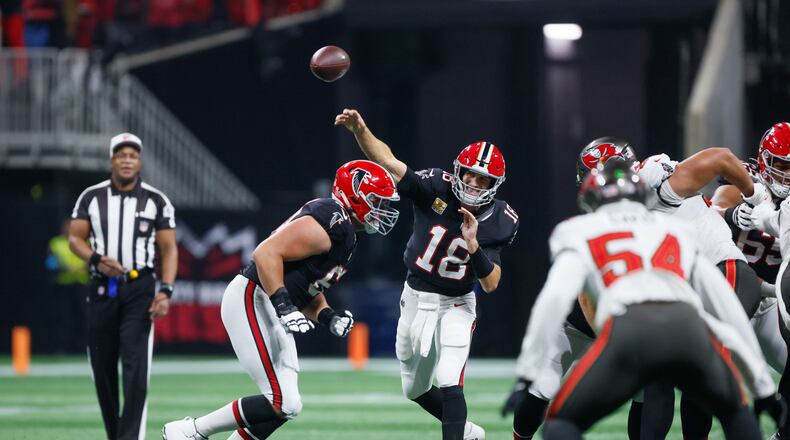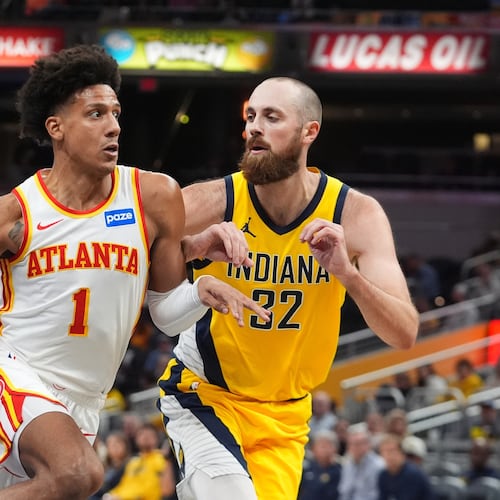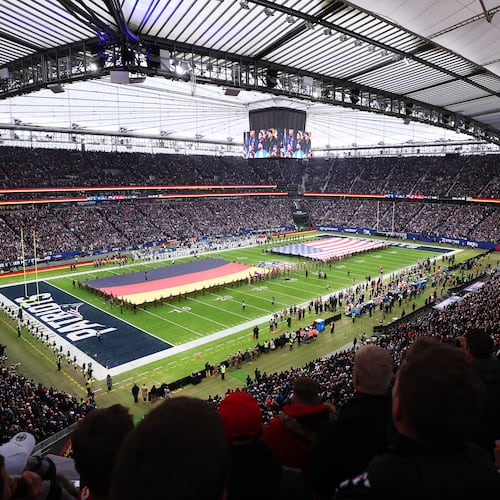Kirk Cousins moved so poorly during his Falcons debut that the offensive plan seemingly was scaled back to accommodate the quarterback. Cousins has seemed to move a little better with each week. But he’s not as mobile as before surgery to repair his right Achilles tendon, and he’s still not planting that foot in the ground to put more zip on his passes.
None of that should be surprising. Even high-level athletes like Cousins need at least a year to fully recover from a ruptured Achilles.
“The good news is you can come back,” Dr. Sam Labib, a professor of orthopedic surgery at Emory University School of Medicine, said generally about athletes. “Ninety percent of athletes can regain their strength and go back to athletics. But we also know that probably only 70% go back to the same level of athleticism.
“Several studies of NBA and NFL players compared statistics before and after Achilles repair. Those who regain their level of athleticism were 65-70% of all comers and it took them, on average, 12 to 18 months to do so.”
Cousins had surgery Oct. 30, 2023. If he is among the professional athletes who manage to regain their previous form, it could happen sometime this season or it may not happen until next year. Researchers can draw conclusions from large samples of subjects, but individual outcomes vary, said Dr. Patrick Grimm of the Medical College of Georgia at Augusta University.
Grimm, an orthopedic and foot surgeon, said Cousins is “falling within the expected timeline” for recovery from Achilles surgery. Cousins should see incremental improvement in his movement over the next few weeks, Grimm said, as he gains more strength, endurance and explosiveness in his right foot.
“The recovery curve continues up to and probably beyond one year,” Grimm said. “A piece of that is mental. That’s true for everyone. It takes time to regain confidence in the injured leg.”
The positive for the Falcons is that Cousins is less than a year removed from the surgery and already has had some solid performances mixed with subpar outings. His best game came Thursday against the Buccaneers. Cousins passed for 509 yards on 58 attempts, both career highs, with four touchdowns and one interception. The Falcons won on KhaDarel Hodge’s 45-yard TD catch from Cousins in overtime.
Cousins did a better job of delivering passes to tight windows in that game. But he still appeared to be throwing with most of his weight on his front foot, which makes it more difficult to drive the ball downfield. The Falcons still are running relatively few plays with Cousins under center. Those plays place more demands on Cousins to move while dropping back for passes and whole handing off to backs on wide runs.
Cousins’ position and playing style should work in his favor as he recovers from his Achilles injury. One study of NFL players who returned from Achilles injury concluded that running backs and linebackers had “significantly worse” performance one year following Achilles surgery. But players at other positions have better outcomes.
“It’s somewhat position-dependent,” Grimm said. “Those players who require speed and agility have a bigger decrease in performance. (The study) didn’t comment on quarterbacks specifically. But I’d say it depends on the style of play, whether they are carrying the ball more outside of the pocket.”
Cousins usually doesn’t do that. He’s become an effective NFL starter by staying in the pocket behind blockers and delivering passes. He’s been particularly adept at passes after run fakes, known as play-action passes. The Falcons haven’t used those plays much early in the season, but offensive coordinator Zac Robinson could call more of them as Cousins’ mobility improves.
The chances are relatively low that Cousins will re-rupture his right Achilles. Grimm and Labib said that, for the general population, it happens about 3% of the time. For high-level athletes, Achilles re-ruptures happen “10 to 15% of the time at the high end,” Grimm said.
Labib said it’s important to remember that a normal, healthy Achilles doesn’t rupture. About 96% of tendons that rupture had changes because of “wear and tear,” Labib said, and surgical repair doesn’t mean “it is going to be brand new.” The scar tissue from surgery stiffens the tendon and requires stretching and strengthening exercises to return it to normal.
Labib said that process and the loads place on the tendon are why it takes so long for athletes to come back from Achilles surgery, if they can do it at all.
“If you are 200 pounds and you jump and land, that tendons that is three-fourth-inch wide is seeing 2,000 pounds of load,” Labib said. “That is not a small ask. So, this tendon has to heal, it has to get strong and then has to withstand very high loads, especially if you are a big-time athlete.”
About the Author
Keep Reading
The Latest
Featured



